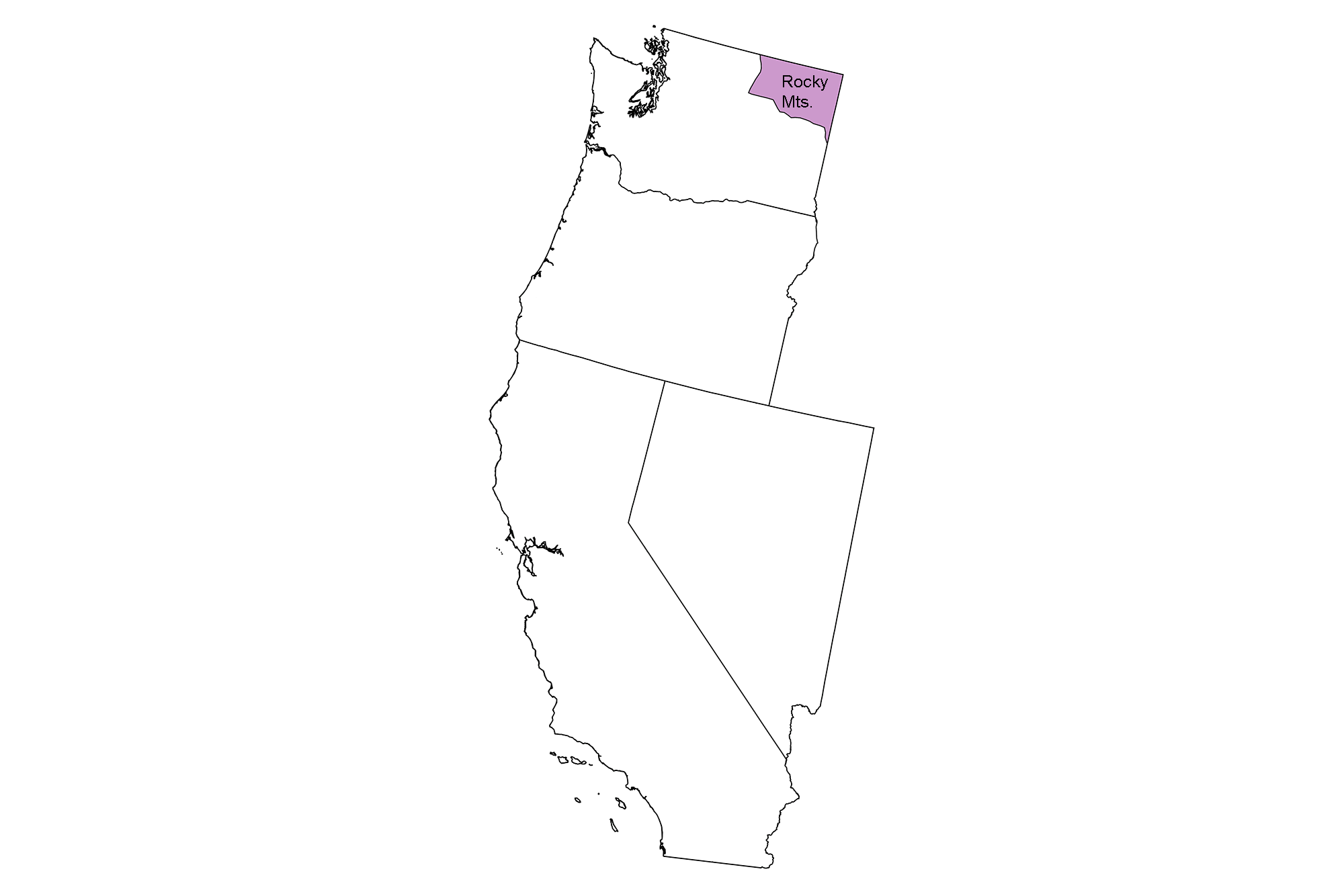Snapshot: Overview of the mineral resources of the Rocky Mountains region of the western United States.
Topics covered on this page: Overview; Metallic Resources; Non-Metallic Resources; Resources.
Credits: Most of the text of this page is derived from "Mineral resources of the western US" by David Gillam, Alexandra Moore, and Gary Lewis, chapter 5 in The Teacher-Friendly Guide to the Earth Science of the Western US, edited by Mark D. Lucas, Robert M. Ross, and Andrielle N. Swaby (published in 2014 by the Paleontological Research Institution). The book was adapted for the web by Elizabeth J. Hermsen and Jonathan R. Hendricks in 2021–2022. Changes include formatting and revisions to the text and images. Credits for individual images are given in figure captions.
Updates: Page last updated July 28, 2022.

The Rocky Mountain physiographic province in the western United States only occupies northeastern Washington State.
Overview
In the far northeast corner of Washington State is a small arm of the Rocky Mountain system. The Rocky Mountains formed about 70 million years ago when an oceanic plate began subducting under the North American plate. The angle of subduction was significantly shallower than usual, causing the Rockies to form much farther inland.
Metallic Resources
Metallic resources are limited in this region. In Ferry County, Washington, mining operations began in the Kettle River-Buckhorn Mountain area. The mine is an underground facility designed to maintain as small a footprint as possible in order to minimize environmental impact. In the year 2013, the mine had a gold equivalent production (wherein silver production is converted to a gold equivalent) of 42 million grams (150,000 ounces).
The other metallic mining operation lies in Pend Oreille County, Washington. This mine accesses a lead-zinc ore body that is located in a narrow belt of sedimentary, volcanic, and metamorphic rocks.
Non-Metallic Resources
Non-metallic resources in this region include sand, gravel, and stone. These materials are used as building materials for roads and other infrastructure in the region and are also shipped outside the region. Commercial-size quarries are found in the area.
Resources
Resources from the Paleontological Research Institution
Digital Atlas of Ancient Life: Minerals (collection of 3D models on Sketchfab): https://skfb.ly/6WxTo
Digital Encyclopedia of Earth Science: Minerals: https://earthathome.org/de/minerals/


